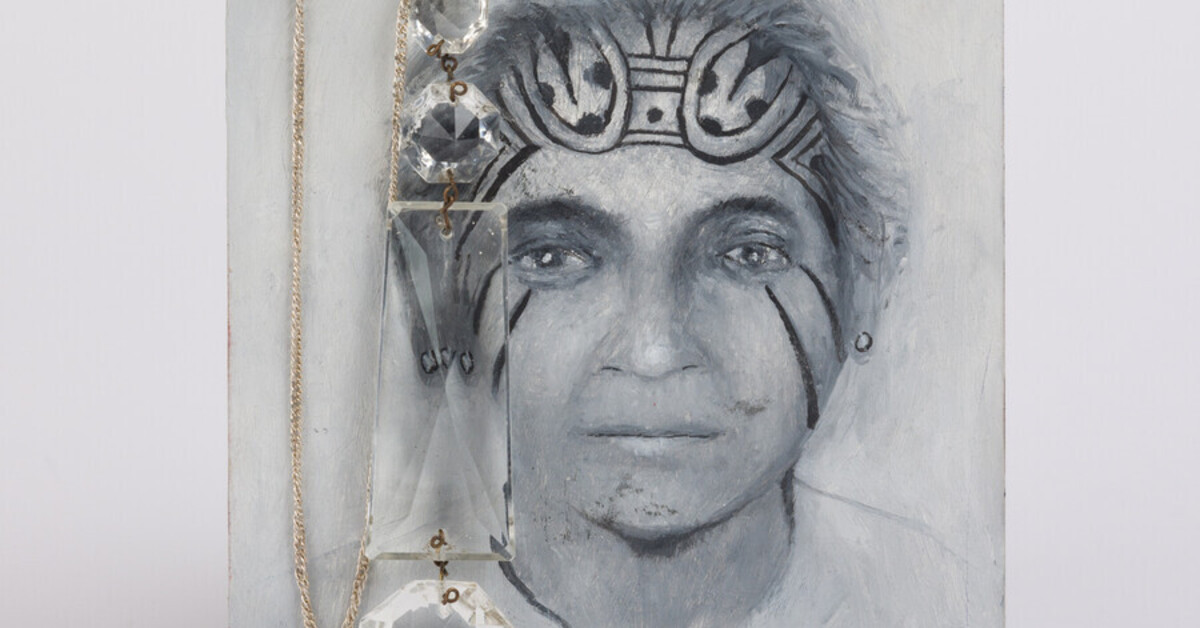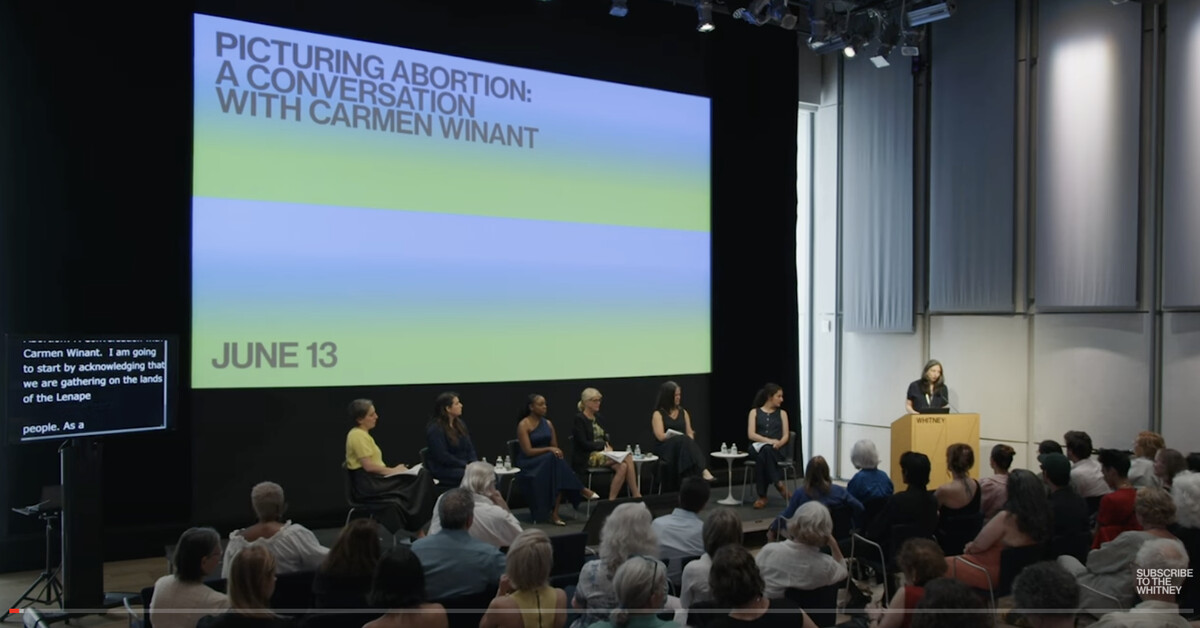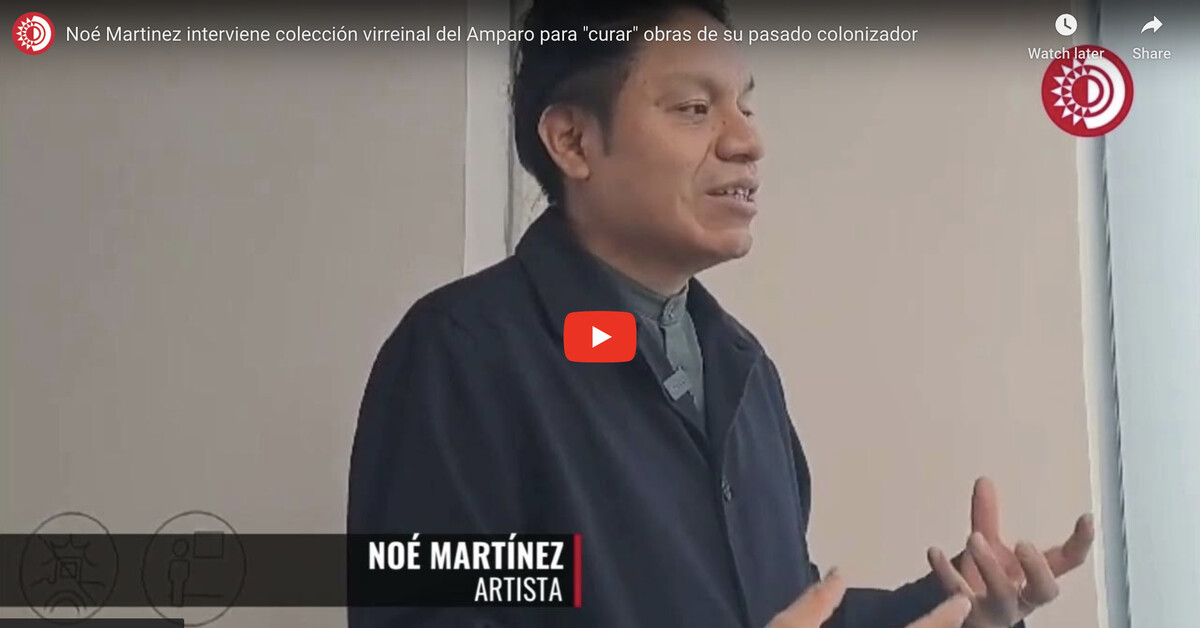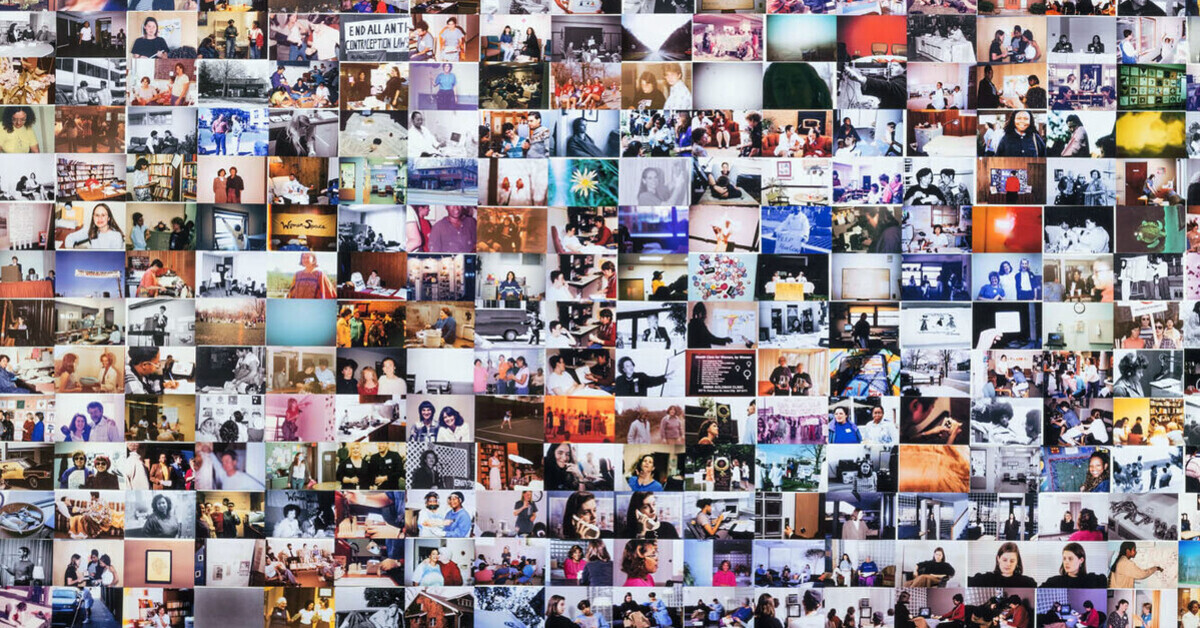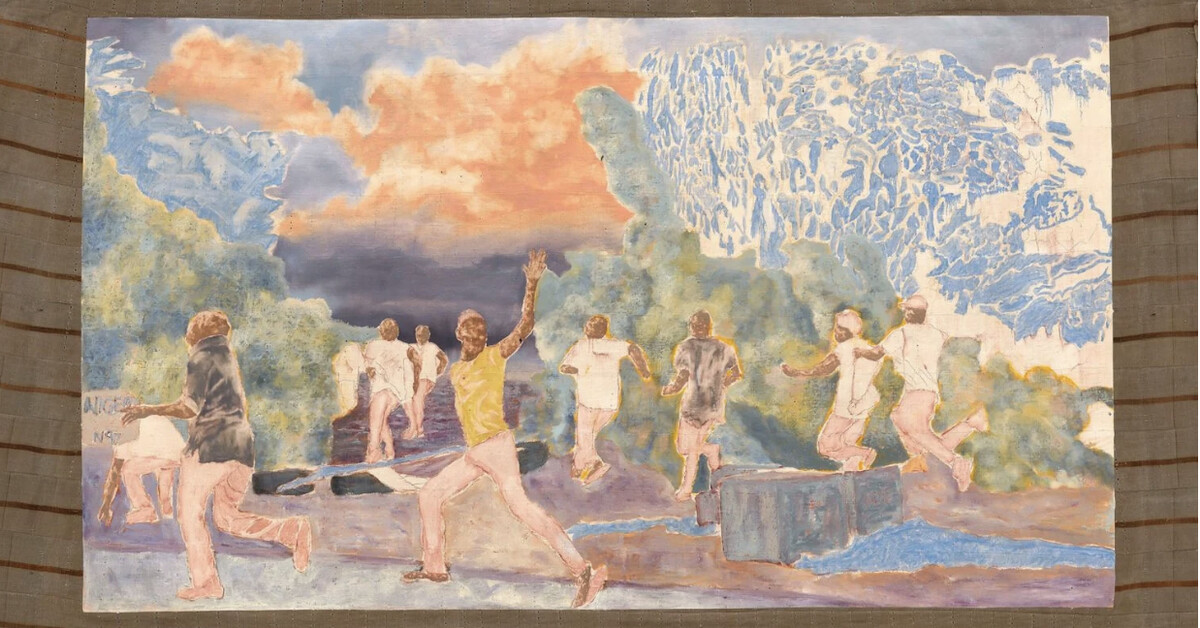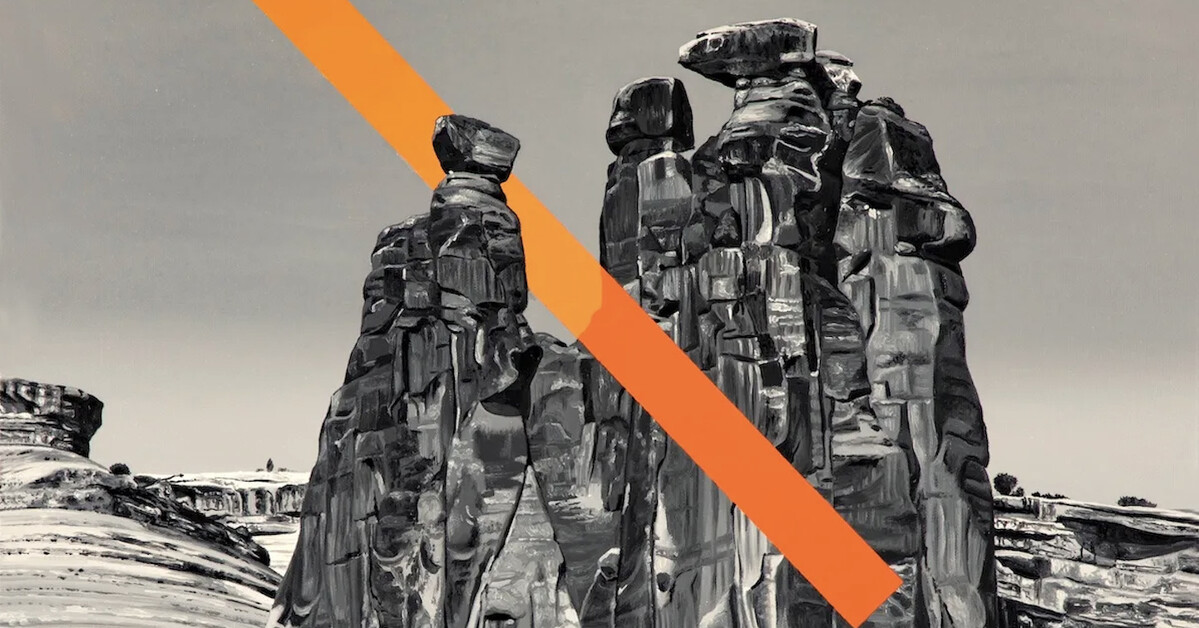8 Must-See Artworks at the Aspen Art Fair
Galerie Magazine / Jul 26, 2024 / by Paul Laster / Go to Original
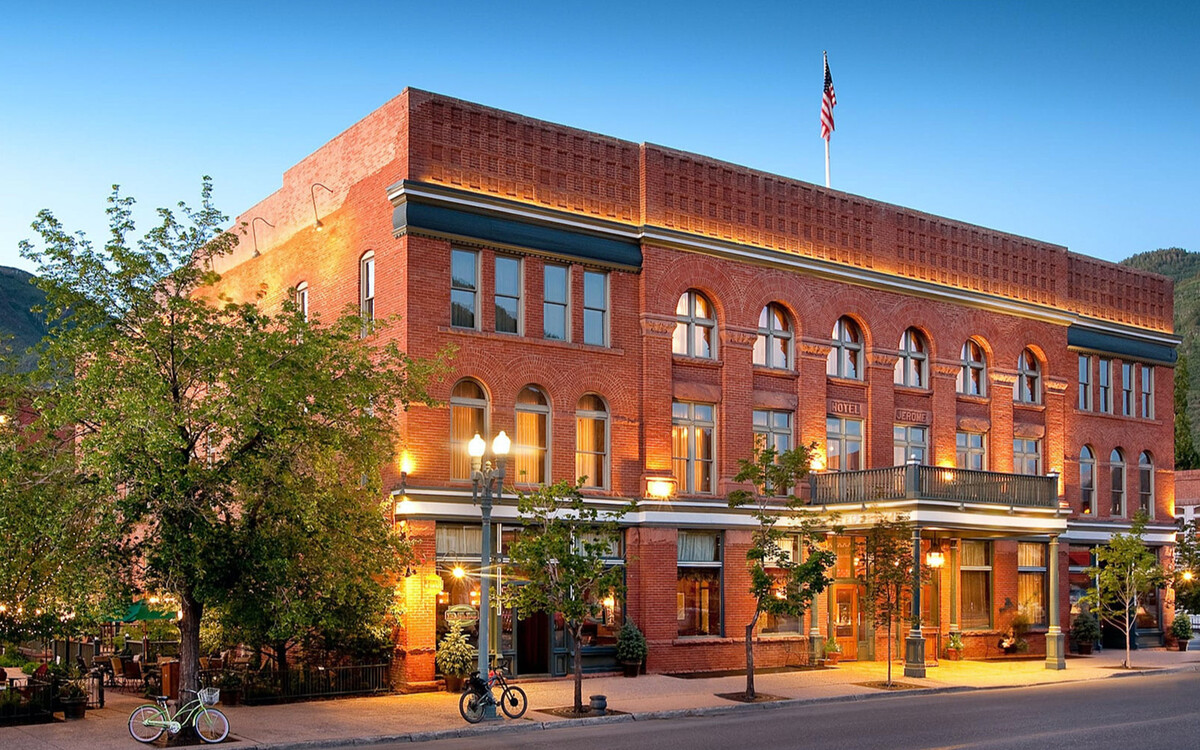
Hotel Jerome.; Photo: Courtesy Hotel Jerome, Auberge Resorts Collection
Running from July 29—August 2, the first edition of the fair will present 30 international exhibitors and curatorial projects
Billed as a new modern and contemporary art, design, and cultural takeover being staged at the Historic Hotel Jerome, the first edition of the Aspen Art Fair will present 30 international exhibitors and curatorial projects from more than a dozen countries.
Co-founded by Becca Hoffman, founder and director of 74tharts, and Bob Chase, president of Aspen’s Hexton Gallery, the fair kicks off the annual Aspen Art Week—centered around the Aspen Art Museum’s ArtCrush Summer Gala and Auction—with a VIP opening reception on July 29 and runs through August 2.
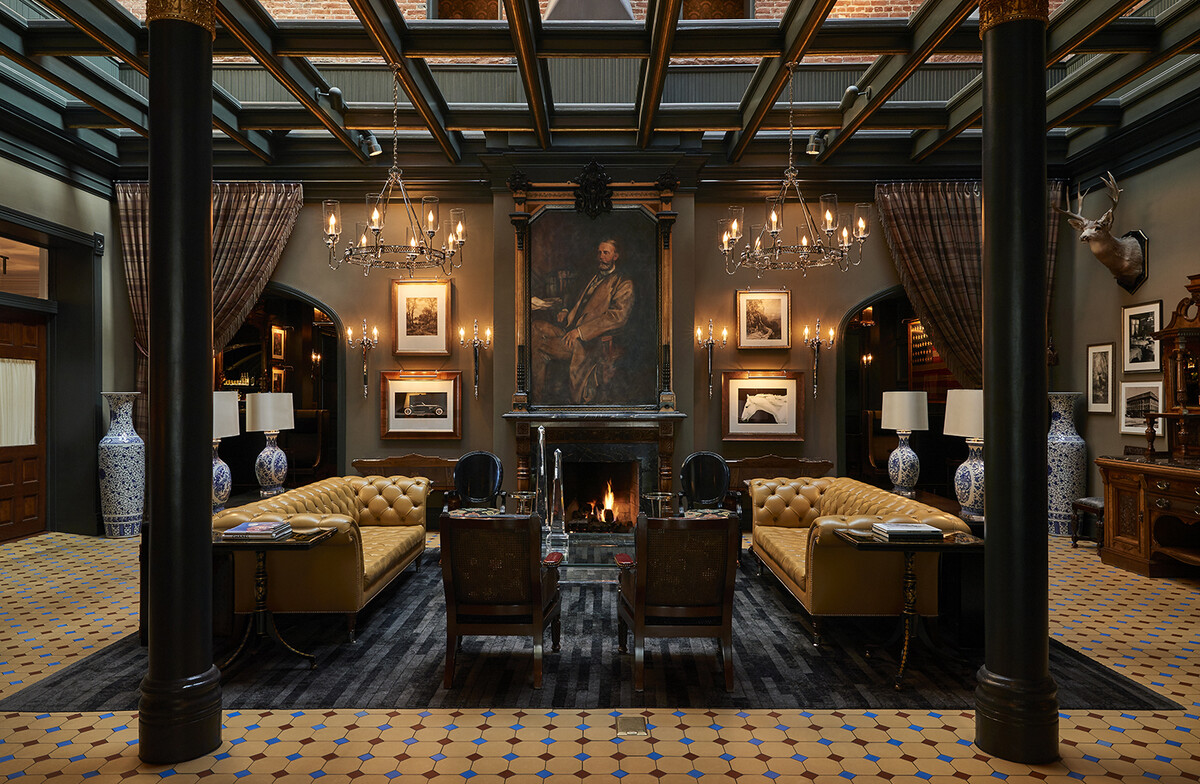
Lobby of Hotel Jerome.; Photo: Courtesy Hotel Jerome, Auberge Resorts Collection
Besides the curated selection of exhibitors—including El Apartamento (Havana and Madrid), Galerie Gmurzynska (Zürich), Miles McEnery Gallery (New York), James Barron Art (Kent, CT), PATRON (Chicago), Perrotin (multiple locations), Secci (Florence, Milan, and Pietrasanta), and Southern Guild (Cape Town and Los Angeles)—the new art and design fair features artist residencies such as Zanele Muholi, talks, home tours, cocktail receptions, and dinners in the intimate, social setting of Hotel Jerome against the stunning backdrop of Aspen.
“We are excited to be back in Aspen this year, for the Aspen Art Fair and the museum’s ArtCrush benefit,” Perrotin partner and senior director Peggy Leboeuf tells Galerie. “The gallery has fostered a close relationship with the Aspen community over the last few years, with presentations like Paola Pivi’s 2022 installations at Aspen Art Museum and Art in Unexpected Places program, and Gabriel Rico’s 2019 exhibition at Aspen Art Museum.
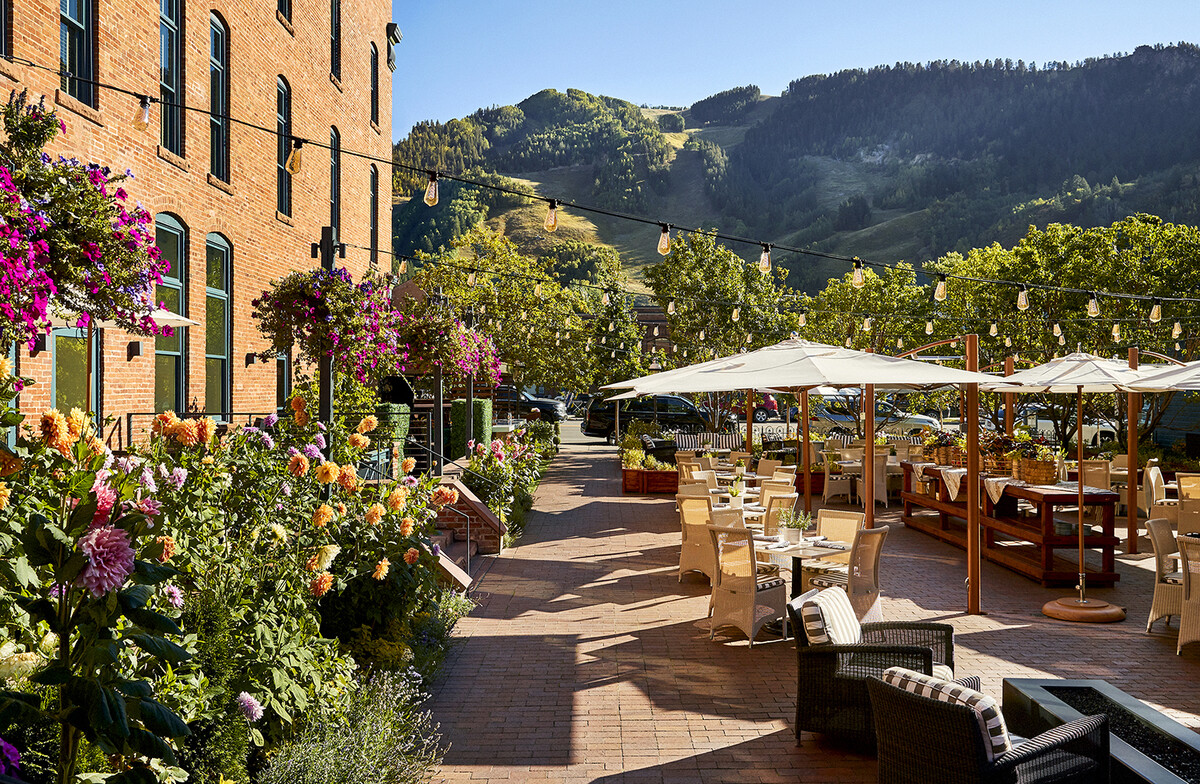
The garden at Hotel Jerome.; Photo: Courtesy Hotel Jerome, Auberge Resorts Collection
“This year, Nick Doyle will donate a work to the museum’s ArtCrush summer gala, alongside exhibiting two new works in his signature denim on shaped canvas at Perrotin’s Aspen Art Fair booth,” she added. “We will also present new work by Jean-Philippe Delhomme, GaHee Park, Julia von Eichel, Katherina Olschbaur, Trevon Latin, among others. We hope to continue our relationship with the city through the fair and the many wonderful institutions in the mountains.”
Scroll through to see a preview of some of the most interesting works to discover, including a marvelous painting by Jean-Philippe Delhomme, from the first edition of the Aspen Art Fair.

Roberto Matta, Untitled, (1963).; Photo: Courtesy Galerie Gmurzynska
1. Roberto Matta at Galerie Gmurzynska
Born in Chile and trained as an architect, Roberto Matta moved to Paris in 1933, where he worked as a draftsman for Le Corbusier’s architecture studio before becoming involved with the Surrealist movement. Starting with drawings and then turning to painting, his art conveyed a fusion between architectural space and biomorphic forms and the representation of psychological states through compositions he called inscapes. Moving to New York in 1939, Matta influenced the development of Abstract Expression with large-scale paintings that mixed his visionary landscapes with abstraction.
Interested in integrating political and scientific elements into his art in later years, his 1963 painting at the fair suggests satellites, antennas, monitors, and screens related to exploring outer space and television’s rising, influential power in the 1960s. Contained in an architectural space or a contemporary sculptural form, his assembled elements seem to be bursting with electrical energy or broadcast messages, surrounded by a mystical light and shadowy force, as though we might also be looking at a symbolic diagram of Matta’s mind.
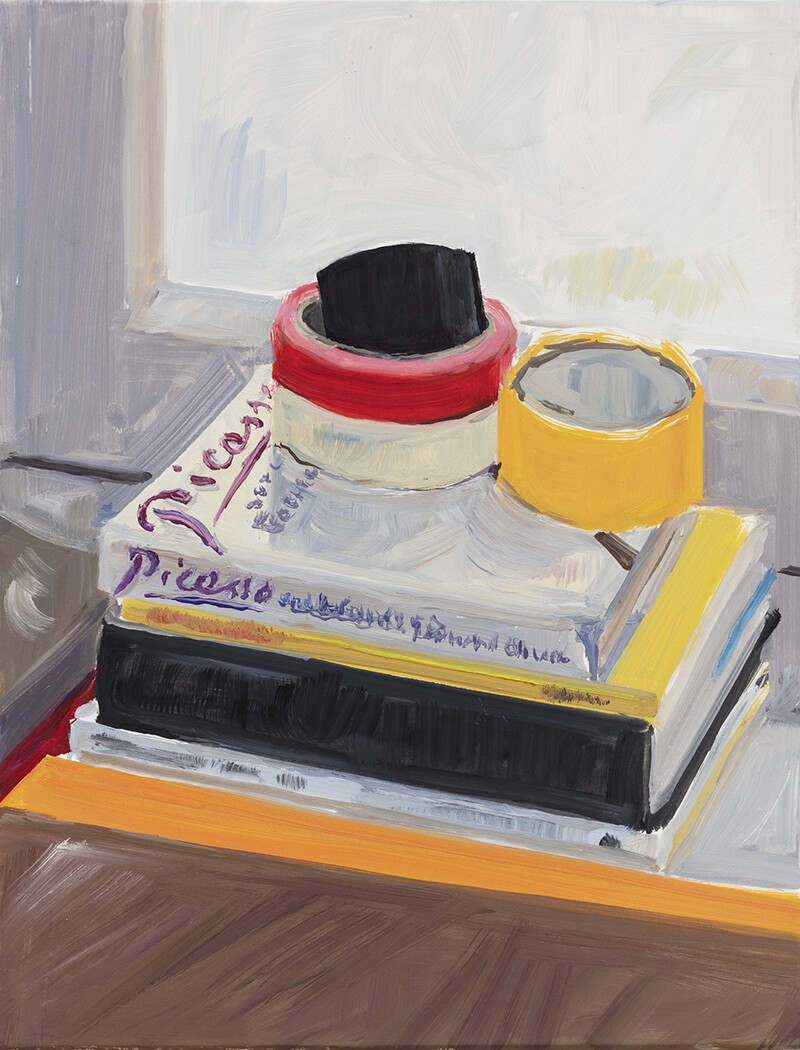
Jean-Philippe Delhomme, Picasso and his friends by Fernande Olivier, (2023).; Photo: Guillaume Ziccarelli; Courtesy the artist and Perrotin
2. Jean-Philippe Delhomme at Perrotin
Best known for his clever Barney’s ad campaign of the 1990s and witty illustrations for magazines and books, Jean-Philippe Delhomme initially kept his painting private until around 2015 when he decided his intimate views of people, places, and things were ready for prime time. Based on direct observation of his subjects and executed in singular painting sessions without any preliminary sketches, his still lives, landscapes, and portraits capture elements of his life and that of his friends and new acquaintances, like a visual diary rapidly recorded on canvas and paper.
His paintings presented in Aspen come from a series of still lives of cut flowers in vases and books on art and literature intimately displayed on tabletops. In the painting illustrated here, we see a copy of Picasso and his friends by Fernande Olivier stacked on other books with rolls of tape, which gives the appearance of the books being in an artist’s studio. Considering the book is a journal of the life and times of Picasso and his pals by Olivier, his lover during his early days in Paris, which is the period when his work showed its most dramatic development, the arrangement in Delhomme’s delightful canvas could be reflecting his progress as a painter or a meaningful moment from a visit with a creative friend.
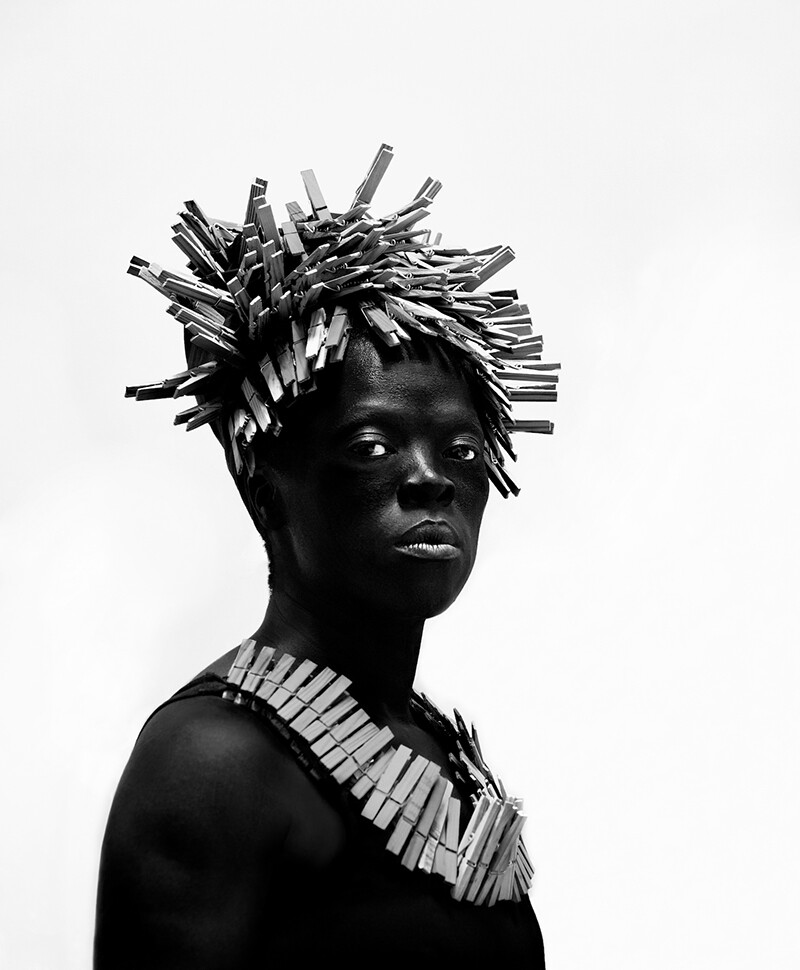
Zanele Muholi, Bester I, New York, (2019).; Photo: Courtesy Southern Guild
3. Zanele Muholi at Southern Guild
A standout artist in “The Milk of Dreams” exhibition at the 2022 Venice Biennale, where her photographs were reproduced at billboard size and displayed throughout the Arsenale, and the subject of a current solo show of photographic portraits and striking bronze sculptures at Southern Guild’s new Los Angeles outpost, visual activist Zanele Muholi is celebrated for their black-and-white self-portraits (shot with a variety of symbolic props in nomadic situations) that deal with race, gender and sexuality and their documentation of the Black LGBTQIA+ community in South Africa.
Her 2019 photograph Bester I, New York, references the artist’s mother, Bester Muholi, who worked as a domestic servant and was the sole breadwinner of her family. Telling her mother’s story through her self-portrait, the artist nobly portrays her as a tribal leader wearing a majestic headdress and necklace while looking straight at the viewer with strength and conviction. Assembled from clothes pins, her ornamentations are made from objects she would have used as a maid, commenting on the limited opportunities for people of color during her homeland’s punishing apartheid.
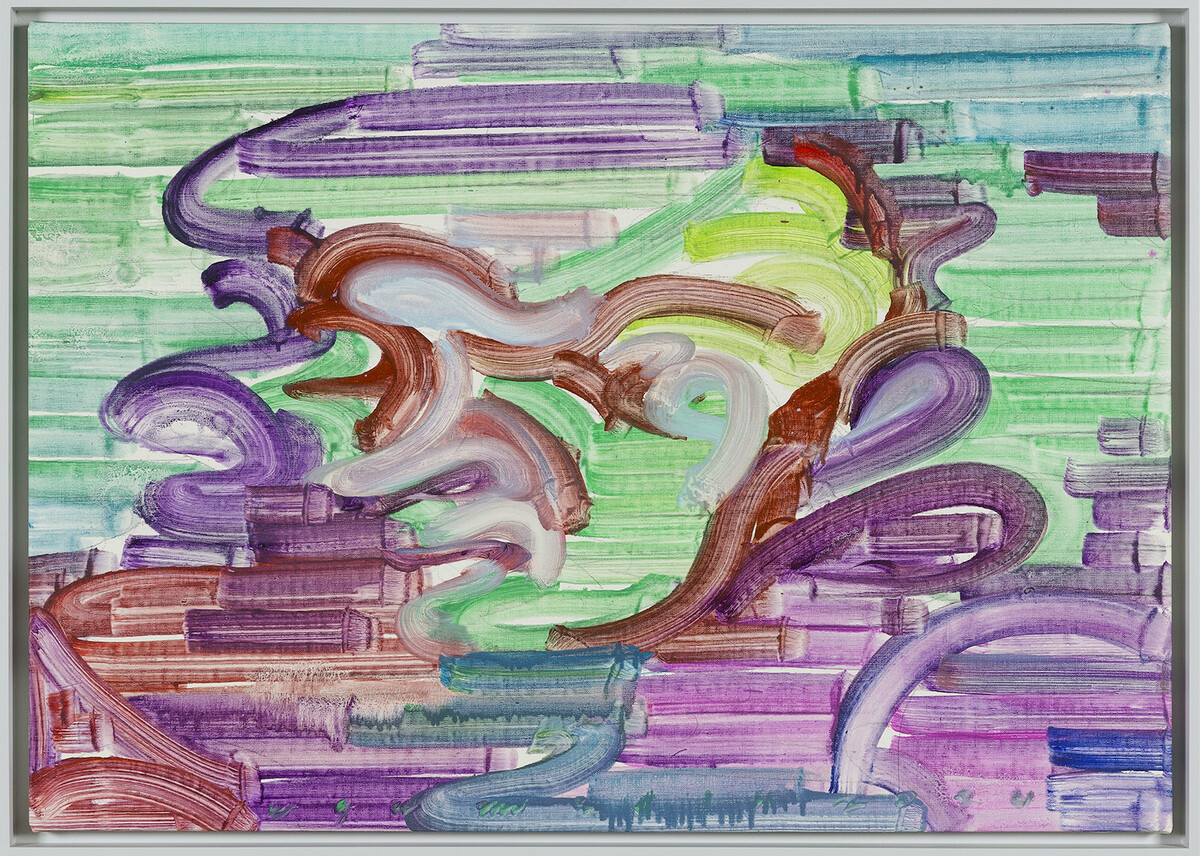
Etsu Egami, Temptation of brushing past, (2024).; Photo: Courtesy SECCI
4. Etsu Egami at SECCI
A Tokyo-born Japanese artist educated at the Karlsruhe University of Arts and Design in Germany and the Central Academy of Fine Arts in Beijing, where she studied with celebrated Chinese figurative painter Liu Xiaodong, Etsu Egami makes semi-abstract portraits rendered in broad, rainbow-colored brushstrokes. Based on real people she has encountered and then reconstructed from her imagination, she captures an impression of her subjects rather than a realistic rendition.
Her recent Temptation of brushing past painting at the fair depicts an androgynous figure primarily composed of elongated, horizontal bands of color. Thinly brushed to let the white of the canvas shine through, the strokes of color present a form of shorthand calligraphy, where the patchy, broken marks reflect the communication obstacles she had to overcome when living in foreign lands—where meaning is sometimes lost in translation. Transcending portraiture, her paintings have also been interpreted as surreal landscapes, where a person occupying a place becomes nature’s face for the realm.
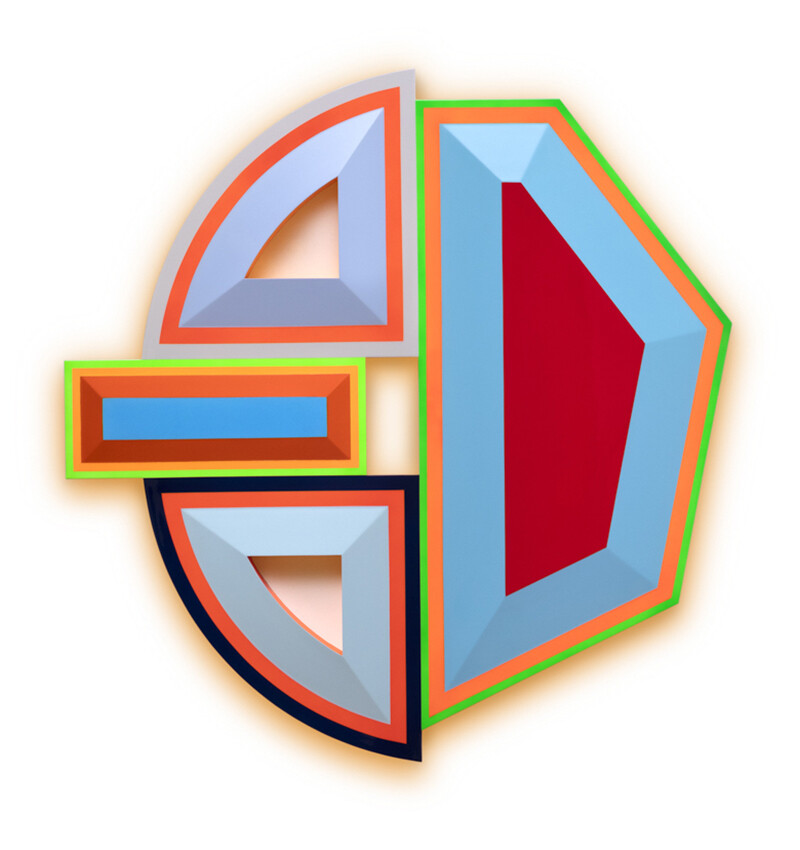
Beverly Fishman, Polypharmacy_ Adhd, Anxiety, Adhd, Depression, (2024).; Photo: Courtesy the artist and Miles McEnery Gallery
5. Beverly Fishman at Miles McEnery Gallery
Constructing abstract paintings that smartly reference the history of hard-edge abstraction and minimalism while addressing the impact of new technologies and the pharmaceutical industry on human life, Beverly Fishman makes hybrid sculptural paintings that are entirely her own. Earning an MFA from the Yale School of Art in 1980, she was the artist-in-residence and Head of Painting at Cranbrook Academy of Art in Detroit, where she still lives and works.
Her four-part, three-dimensional, shaped painting—Polypharmacy_ Adhd, Anxiety, Adhd, Depression—at Miles McEnery Gallery’s fair booth is a visual metaphor for the damage caused by society’s dependence on addictive medications. The color combinations in the painted wood piece create a visual disturbance, and the shifting forms add psychological tension to the geometric mix. Poetically conveying the problem of prescribing multiple medicines to one individual, Fishman’s sculptural paintings delve into the promises of pharmaceuticals as the means for a cure while sparking dialogue around the growing health concerns related to Big Pharma and drugs.
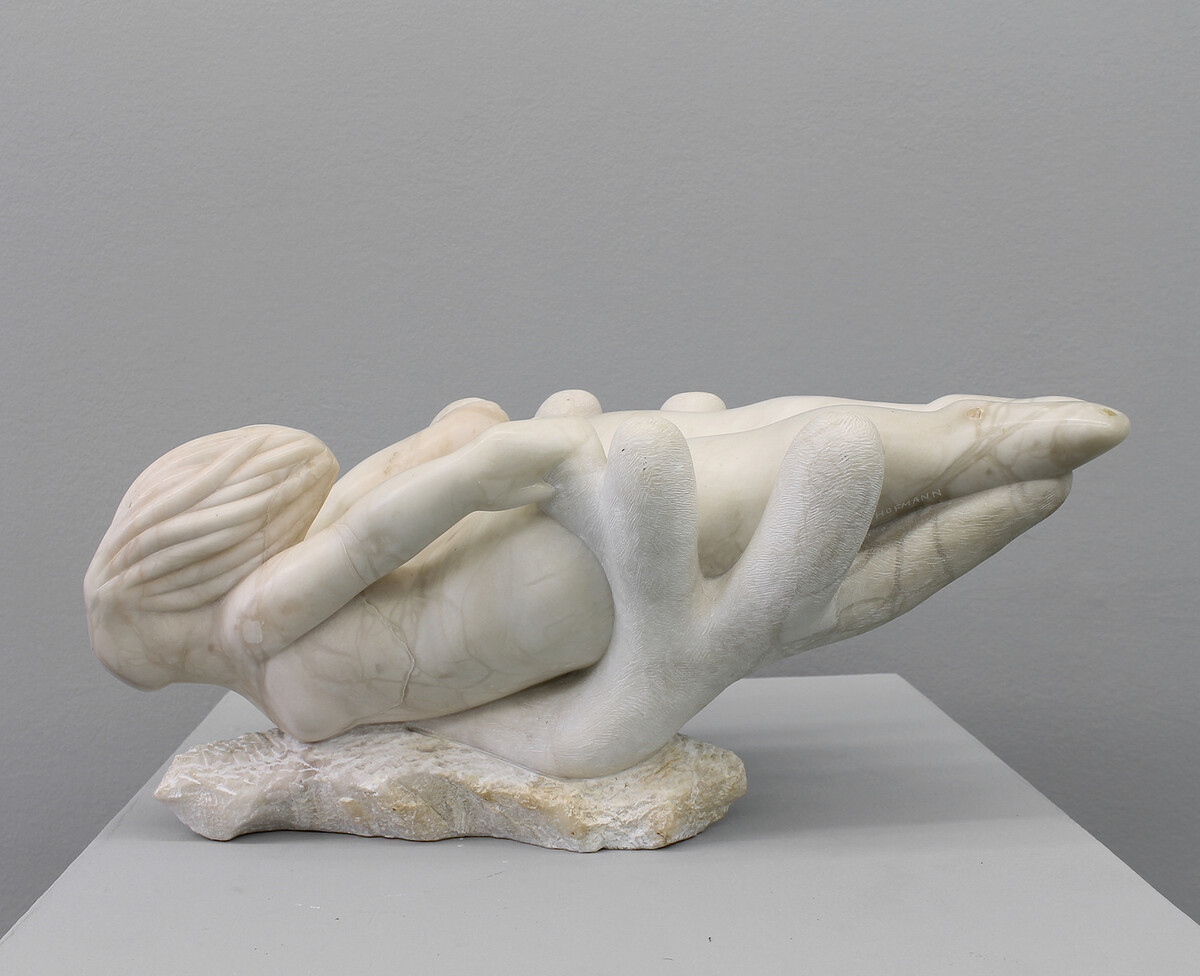
Kay Hofmann, Isla Mujeres, (late 1990s).; Photo: Evan Jenkins; Courtesy the artist and PATRON
6. Kay Hofmann at PATRON
Inspired by her father’s sculpting practice as a Wisconsin stonecutter who specialized in tombstones and monuments, Kay Hofmann graduated from the Art Institute of Chicago in 1955 with a degree in painting but later turned to sculpture and stonework. Blurring the lines between figuration and abstraction, she hand-carves seductive forms in alabaster and other exotic stones that suggest people at rest and play and atmospheric wind conditions, such as storms and breezes.
Hofmann’s Isla Mujeres sculpture from the late 1990s at PATRON’s booth depicts a female swimmer in motion, diving deep in the waters off the Mexican island in the Caribbean Sea. The figure’s hair becomes an abstract, organic shape of linear forms, like an underwater plant growing atop her smooth, bulbous body. Textured tentacles embrace the swimmer’s physique like coral or seaweed, hugging her thighs and attempting to keep from leaving the bottom of the sea, the warmth of the island, and the pleasure of leisure time.
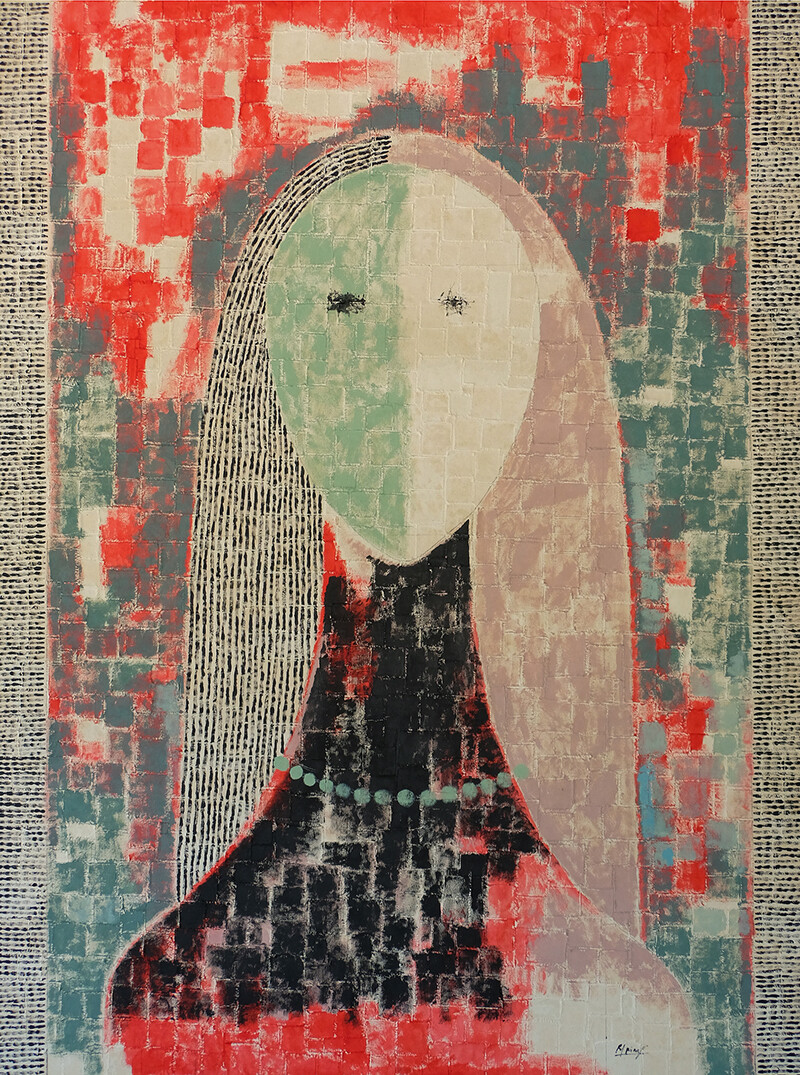
Roberto Diago, Untitled, (2024).; Photo: Courtesy El Apartamento
7. Roberto Diago at El Apartamento
A Cuban artist descending from a family of artists, including a grandfather who was one of the pivotal voices of Cuban art in the 1940s and after whom he was named, Roberto Diago carries on his ancestors’ traditions as a painter and sculptor, working both figuratively and abstractly. Dealing with issues of racism in Cuba, which had supposedly been eradicated yet still persists, the Havana-based artist explores his Afro-Cuban roots through a variety of found and manipulated materials.
His untitled 2024 painting of a faceless figure at the fair is part of an ongoing series of mixed-media canvases on collaged, gridded surfaces. Portraying a female figure with flowing hair and an elongated neck (like a sitter in a Modigliani painting) adorned with a string of pearls, the subject’s face is split with two different hues indicating the mixed nature of the Cuban people—one that the artist sees as natural but other Cuban with colonial heritages still judge.

Alex Katz, Landscape with House, (c. 1955).; Photo: Courtesy James Barron Art
8. Alex Katz at James Barron Art
A native New Yorker, the 97-year-old Alex Katz was born in Brooklyn, grew up in Queens, and studied art at Cooper Union right after WWII. Beginning his career as an artist during the heyday of Abstract Expressionism, Katz rebelled to develop a form of realism informed by abstraction. Best known for his portraits of stylish, creative people and vast landscapes, Katz’s work can regularly be found in major museums, lining the walls of New York’s 57th Street subway station, and for the rest of the summer on the Island of San Giorgio Maggiore as one of the best collateral exhibitions of Venice Biennale.
Katz’s small-scale painting Landscape with House, from around 1955, is an early example of the artist’s interest in landscapes, featured in a series of new, monumental paintings of grassy terrains and inky oceans in Venice. Employing a lively number of quickly applied brushstrokes, Katz defined a house surrounded by rambling trees in an overgrown field with various shades of green. The blue sky, caught reflecting off the roof, adds a certain serenity to the canvas’ otherwise unrestrained, abstract scene—perhaps as close as Katz would come to embracing the popular painting style of the time.

